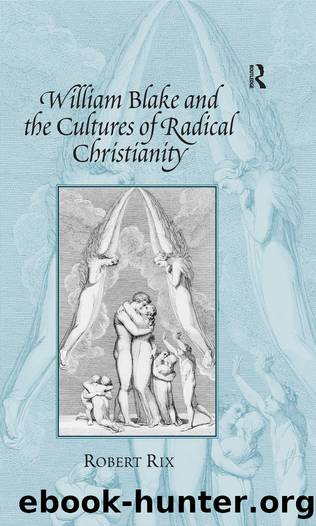William Blake and the Cultures of Radical Christianity by Robert Rix

Author:Robert Rix [Rix, Robert]
Language: eng
Format: epub
ISBN: 9780754656005
Barnesnoble:
Publisher: Taylor & Francis
Published: 2007-06-28T00:00:00+00:00
Africa and Slavery
While active in the New Jerusalem Church, August Nordenskjöld, Wadström and some of their international Masonic contacts published a pamphlet describing a plan for establishing a colony on the coast of Sierra Leone, to be founded and run on Swedenborgian principles. The title of the pamphlet is more than just a little indicative of the politics underwriting the project: Plan for a Free Community upon the Coast of Africa under the Protection of Great Britain; but Intirely Independent of All European Laws and Governments.. The pamphlet was signed in June 1789 and published by Robert Hindmarsh.
The Plan was nurtured in the soil of utopian and millennialist hopes. Immediately following the title-page, the Book of Revelation 21:5 is quoted: âBehold, I make all Things New.â The Swedenborgians saw in the colony an opportunity to establish a real community modelled on Swedenborgâs vision of the Millennium. Through this endeavour, Swedenborgâs religious truth gained a new political momentum. For instance, the author of the pamphlet asks: âTo what purpose is Spiritual Liberty without Civil Liberty?â47 The Plan was abolitionist in arguing that Africans should be free in the new colony. Furthermore, this plan was to go hand-in-hand with the abolition of âCivil slaveryâ for Europeans, who were under the âabject servility to innumerable monied Tyrantsâ (ivâv).
It is claimed that the 'DOCTRINE OF THE NEW JERUSALEM CHURCH is ... best calculated for a Free Community' (p. 39). In fact, 'There is no Religion in the World which is founded on such Principles of Freedom as this, in as much as it admits and inculcates the freest exercise of Intellectual Faculty, holding in abhorrence the old tyrannic Rule of keeping the Understanding under implicit Obedience to Faith' (p. 40). In an appendix, articles for governance in the colony are set up. In contrast to the England they would leave behind, there would be democratic suffrage for all adult males irrespective of social class. Central to the argument of the Plan was the eventual abolition of slavery, and that the âEuropeanâ and the âNegroâ should live together in harmony (p. 50).
Some Swedenborgians had wild emigration plans, such as the Marquis de Thomé, the founder of the strictly orthodox Rite of Swedenborg in Paris. In a letter from 1784, when de Thomé was visiting the London Swedenborgians, he entertained the idea of using air balloons (which had recently been invented) as a second Noahâs Ark to carry all the Swedenborgians to Africa.48
Blake was undoubtedly familiar with the Plan. Not only was it widely advertised in Swedenborgian publications during 1789â1790, but its abolitionist programme would undoubtedly have stirred his interest. Blake became directly involved in the question of slavery around 1791, when Joseph Johnson sent him a portfolio of the Scottish Captain John Gabriel Stedman's sketches, illustrating the dire conditions of slaves in Surinam. Blake engraved at least sixteen of the plates that went into Narrative, of a Five Years Expedition, Against the Revolted Negroes of Surinam (not published before 1796),49 Blake was also a good friend of the painter Richard Cosway, who housed the former slave Ottobah Cugoano.
Download
This site does not store any files on its server. We only index and link to content provided by other sites. Please contact the content providers to delete copyright contents if any and email us, we'll remove relevant links or contents immediately.
Room 212 by Kate Stewart(5041)
The Crown by Robert Lacey(4731)
Endurance: Shackleton's Incredible Voyage by Alfred Lansing(4683)
The Iron Duke by The Iron Duke(4293)
The Rape of Nanking by Iris Chang(4139)
Joan of Arc by Mary Gordon(4017)
Killing England by Bill O'Reilly(3953)
Say Nothing by Patrick Radden Keefe(3903)
I'll Give You the Sun by Jandy Nelson(3362)
Shadow of Night by Deborah Harkness(3308)
Hitler's Monsters by Eric Kurlander(3269)
Mary, Queen of Scots, and the Murder of Lord Darnley by Alison Weir(3152)
Blood and Sand by Alex Von Tunzelmann(3140)
Darkest Hour by Anthony McCarten(3072)
Eleanor & Park by Rainbow Rowell(3063)
Margaret Thatcher: The Autobiography by Thatcher Margaret(3029)
Red Famine: Stalin's War on Ukraine by Anne Applebaum(2874)
Book of Life by Deborah Harkness(2869)
The One Memory of Flora Banks by Emily Barr(2803)
